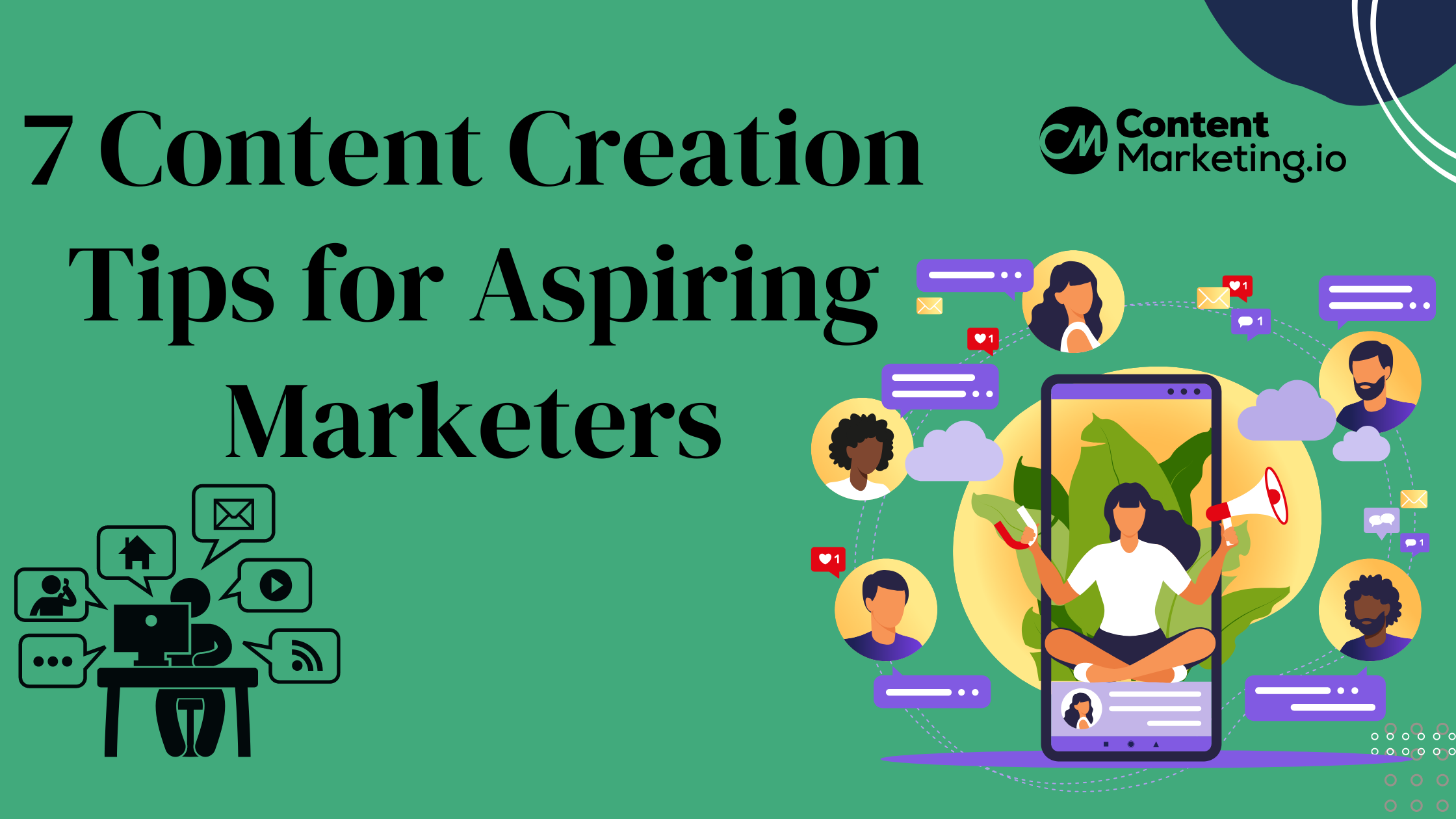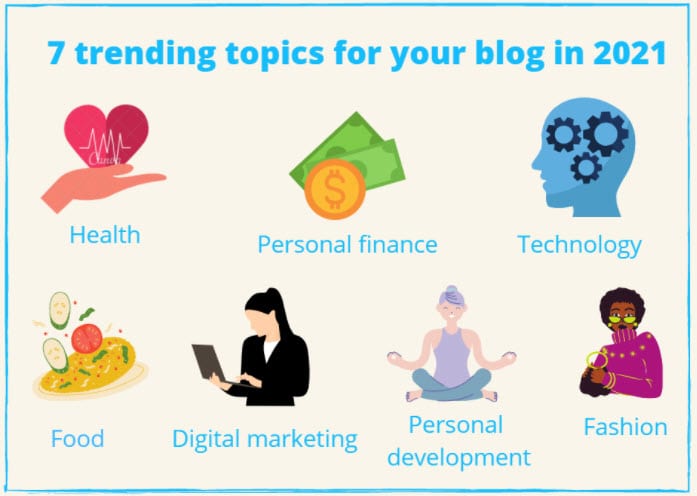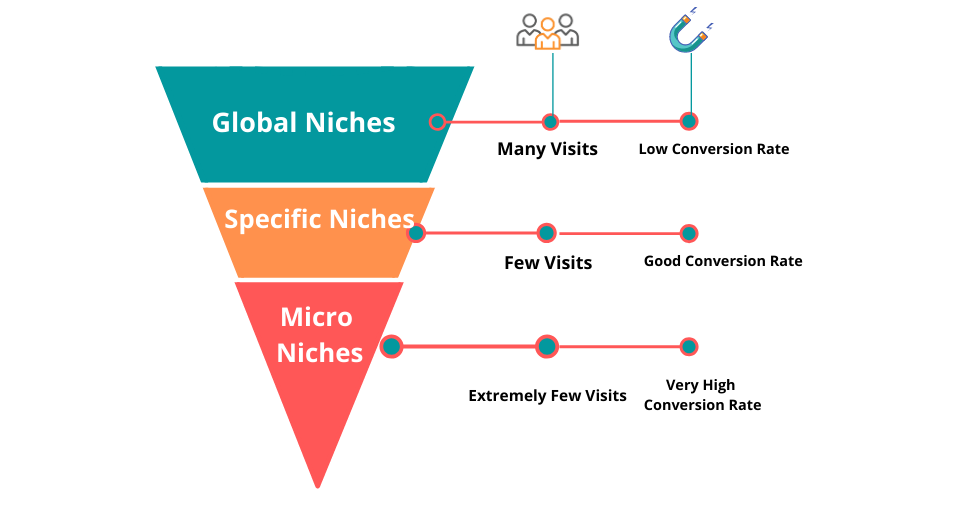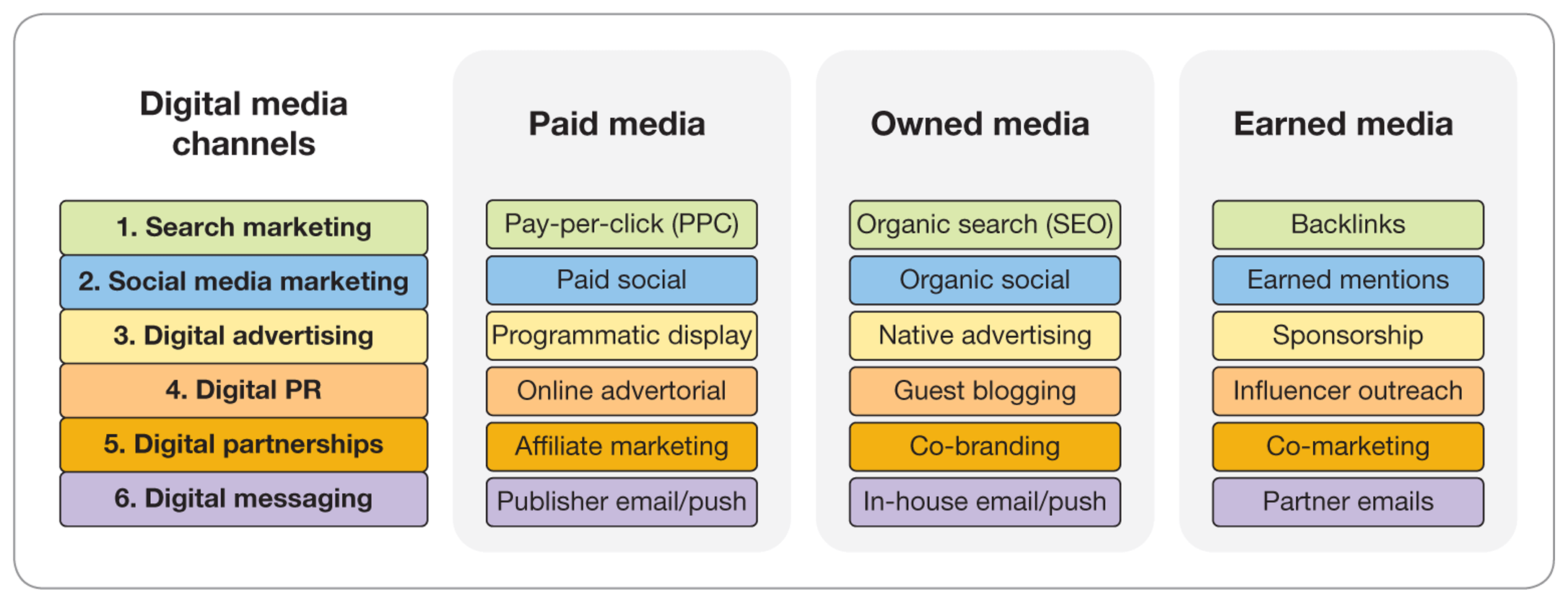Creating content can seem daunting for beginners. Yet, with the right tips, it becomes manageable and fun.
Content creation is crucial for anyone looking to share ideas, build a brand, or engage an audience. It involves writing, designing, and producing materials that capture interest and communicate effectively. Beginners often face challenges like finding the right tone, choosing topics, and maintaining consistency.
But don’t worry. With some guidance, you can overcome these hurdles. In this blog post, you’ll discover essential tips that simplify the content creation process. These insights will help you create engaging, clear, and impactful content. Whether for a blog, social media, or personal projects, these tips will set you on the path to success. Let’s dive in and explore how you can start creating content with confidence.

Credit: nomadnomic.com
Getting Started With Content Creation
Beginner content creators can start by focusing on understanding their audience. Choose topics that interest and engage readers. Use simple language and clear sentences for easy understanding. Practice consistency in posting to build a connection.
Getting started with content creation can feel both exciting and overwhelming. You’re about to embark on a journey that lets you share your ideas with the world. But how do you begin? The key is to start small, learn from each step, and steadily build your confidence. Let’s dive into some practical steps to get you on the right path. ###Choosing Your Niche
Finding the right niche is like picking the perfect pair of shoes. It should fit you comfortably and suit your style. Start by identifying topics that you are passionate about and have some knowledge of. This enthusiasm will fuel your creativity and make your content more engaging. Consider your audience. What are their interests and needs? Aligning your niche with your audience’s demands ensures your content is relevant and valuable. Remember, it’s okay to start broad and narrow down as you go. As you create, you’ll discover what resonates and refine your niche further. ###Setting Realistic Goals
Goals are your roadmap. They help you stay focused and measure your progress. Begin by setting small, achievable goals. For example, aim to write one blog post per week or gain a certain number of followers in a month. Track your progress. Use simple tools like a calendar or planner to keep tabs on your achievements. This not only keeps you organized but also motivates you when you see how far you’ve come. Ask yourself, what do you want to achieve in the next three months? Break that down into actionable steps and tackle them one at a time. Celebrate every milestone, no matter how small. This keeps the momentum going and builds your confidence as a content creator. By following these steps, you’ll create a strong foundation for your content creation journey. Embrace the process, learn from each experience, and watch your skills grow.Understanding Your Audience
Understanding your audience is key in content creation. Identify their interests, needs, and challenges. Tailor your content to resonate with them, ensuring relevance and engagement.
Understanding your audience is the cornerstone of successful content creation. Knowing who you are speaking to guides your content, helping you connect with your readers on a deeper level. Whether you are writing a blog post, creating a video, or designing an infographic, understanding your audience ensures your message hits home.Researching Audience Preferences
Start by identifying where your audience spends their time online. Are they scrolling through social media, reading blogs, or watching YouTube videos? Use tools like Google Analytics or social media insights to gather data. Look at what content your audience engages with. What topics get the most comments or shares? This information will help you tailor your content to their interests. Don’t just focus on what they like—understand what they need. Are there common questions or problems they face? Addressing these in your content can make it more valuable to your audience.Creating Audience Personas
Building audience personas helps you visualize your readers. Think of these personas as fictional characters representing different segments of your audience. Include details like age, job, hobbies, and challenges. This helps you create content that resonates on a personal level. Consider the motivations behind your audience’s actions. What drives them to consume your content? Understanding this can help you craft messages that inspire and engage. Have you ever noticed how some content just clicks with you? That’s because it speaks directly to your needs and interests. Aim to create that connection with your audience. As you create your audience personas, ask yourself: How can I make my content more relatable and useful? This question keeps your focus on serving your audience effectively. Understanding your audience is not a one-time task. It requires ongoing effort and a willingness to adapt as your audience evolves. Are you ready to dive deeper into who your audience truly is?Crafting Compelling Content
Crafting compelling content is essential for engaging your audience. This involves creating material that not only informs but also captivates. Beginners often struggle with making their content stand out. Focus on storytelling and engaging formats to create memorable experiences for your readers. These elements help build a connection between your content and your audience.
Storytelling Techniques
Stories captivate the reader’s imagination. Use vivid descriptions to bring your story to life. Characters should be relatable and evoke emotion. Create a narrative arc that keeps readers intrigued. Conflict and resolution add depth to your story. Start with a compelling hook to grab attention. Use dialogue to give characters a voice. This makes them more authentic and engaging.
Using Engaging Formats
Choose formats that fit your message. Lists and bullet points are easy to read. Infographics present data visually and attractively. Videos and podcasts offer dynamic ways to share information. Interactive content encourages participation. Quizzes and polls engage the audience actively. Mix different formats to keep the content fresh. This variety maintains interest and adds value.
Tools And Resources For Beginners
Embarking on a content creation journey can be thrilling and overwhelming. As a beginner, you might wonder where to start and what tools you need. Knowing which resources and platforms to use is crucial for creating impactful content. Let’s dive into some essential tools and resources that can elevate your content creation skills.
Essential Software And Platforms
When I started my content creation journey, I found myself juggling between different software, trying to find the right fit. Ultimately, I discovered that having a few essential tools made all the difference.
Consider starting with platforms like WordPress or Medium for blogging. They’re user-friendly and offer a variety of templates to suit your style.
For graphics, Canva is a lifesaver. It allows you to design eye-catching visuals without needing a graphic design degree.
Video content creators can benefit from tools like Adobe Premiere Rush or iMovie. These platforms are perfect for editing videos and adding special effects without getting overwhelmed by complex features.
Leveraging Free Resources
As a beginner, budget constraints might be a concern. But fear not, as there are plenty of free resources to kickstart your journey.
Begin with free stock photo websites like Unsplash and Pixabay. They offer high-quality images that can enhance your blog posts or social media content.
When it comes to writing, Grammarly can be your best friend. It helps refine your writing by catching spelling and grammar errors effortlessly.
Need inspiration for topics? Use tools like AnswerThePublic to see what people are curious about. It’s a great way to get ideas and create content that resonates with your audience.
Have you ever thought about using free online courses to sharpen your skills? Platforms like Coursera and Khan Academy offer a plethora of courses that can help you grow as a content creator.
What free resources have you found helpful in your journey? Exploring these options can lead to unexpected insights and boost your creativity.
Remember, starting with the right tools and resources can make your content creation process smoother and more enjoyable. What’s holding you back from trying these tools today?
Building A Content Strategy
Creating content without a plan is like sailing without a map. A content strategy guides you through the creation process. It helps in reaching your audience effectively. For beginners, having a solid strategy is crucial. It ensures consistency and relevance in content.
A well-defined strategy aligns with your goals. It ensures that content resonates with your audience. Begin by understanding what your audience wants. Then, create content that addresses their needs.
Planning Content Calendars
Content calendars are essential tools for creators. They help in organizing and scheduling posts. A calendar provides a clear overview of upcoming content. This ensures timely and consistent delivery.
To start, list out your content ideas. Then, assign each to a specific date. This prevents last-minute rushes and ensures quality. Regular updates to your calendar are important. It keeps your content fresh and relevant.
Balancing Variety And Consistency
Variety keeps your audience engaged. Consistency builds trust and expectation. Finding the right balance is key. Too much variety can confuse your audience. Too much consistency can become boring.
Mix different types of content like blogs, videos, and infographics. This caters to different audience preferences. Ensure your content aligns with your brand’s voice. This maintains consistency across all platforms.
Plan content that covers various topics. This addresses different audience interests. A balanced approach keeps your content dynamic and engaging.

Credit: www.partica.com
Optimizing Content For Seo
Optimizing content for SEO is crucial for gaining visibility online. Beginners often feel overwhelmed by the technical aspects of SEO. Understanding the basics can make this process smoother. Focusing on keywords and best practices will help improve search rankings.
Keyword Research Basics
Keyword research is the first step in SEO. Identify words your audience uses to find content. Tools like Google Keyword Planner can help. Focus on keywords with low competition and high search volume. Short phrases are easier to rank. Include them naturally in your content.
Implementing Seo Best Practices
SEO best practices enhance your content’s visibility. Use headings and subheadings to structure your content. Include your main keyword in the title, first paragraph, and headings. Write unique meta descriptions for each post. They should be concise and keyword-rich. Alt tags for images improve accessibility and SEO.
Internal linking provides valuable information to readers. Link to related content within your site. This helps search engines understand your site’s structure. Fast-loading pages enhance user experience and SEO. Use tools to check your site’s speed regularly.
Promoting Your Content
Creating content is only half the battle. The next crucial step is promoting it effectively. Many beginners struggle with this aspect. Promotion ensures your content reaches the right audience. It helps increase visibility and engagement. Without promotion, even the best content can go unnoticed. Let’s explore key strategies to promote your content effectively.
Utilizing Social Media Channels
Social media is a powerful tool for promotion. Share your content on various platforms. Choose platforms relevant to your target audience. Facebook, Twitter, and Instagram are popular choices. Each platform has its unique features. Tailor your content for each platform. Use images for Instagram. Share links on Twitter. Engage with followers and join discussions. Respond to comments promptly. This builds trust and encourages sharing.
Collaborating With Influencers
Influencers have large followings and can boost your content’s reach. Partnering with them can be beneficial. Identify influencers relevant to your niche. Reach out with a clear proposal. Explain how collaboration can benefit both parties. Influencers can share your content with their audience. This increases exposure and credibility. Choose influencers who align with your values. Authentic partnerships resonate more with audiences.
Analyzing Performance Metrics
Evaluating how content performs helps beginners improve their creation skills. Track views, engagement, and feedback. Understand what works best to produce better content.
Analyzing performance metrics is a crucial step for any beginner in content creation. It’s not just about publishing and hoping for the best; it’s about understanding what’s working and what isn’t. By diving into metrics, you can make informed decisions to enhance your content’s reach and impact.Understanding Analytics Tools
Start by getting familiar with basic analytics tools like Google Analytics or social media insights. These tools offer valuable data on user engagement and content performance. Look for metrics such as page views, average time on page, and bounce rate. These indicators help you understand how your audience interacts with your content. Don’t be overwhelmed by the numbers. Focus on a few key metrics initially and gradually expand your analysis as you become more comfortable.Adjusting Strategies Based On Data
Once you understand the metrics, the next step is to adjust your strategies. If a blog post has high traffic but low engagement, consider tweaking its content to be more interactive or adding a call to action. Use data to identify which topics resonate most with your audience. This allows you to create more content that aligns with their interests and needs. Imagine a post you thought would be a hit but didn’t perform well. Instead of being disheartened, analyze the data, adjust your approach, and try again. It’s all part of the learning process. Are you taking the time to review your performance metrics regularly? Doing so can transform your content strategy from guesswork to a data-driven approach that yields real results.
Credit: contentmarketing.io
Frequently Asked Questions
What Are The 5 C’s Of Content Creation?
The 5 C’s of content creation are: Clarity, Consistency, Creativity, Credibility, and Connection. Ensure clear messaging, maintain a consistent tone, employ creative storytelling, establish trust with credible information, and connect emotionally with your audience. These elements drive effective and engaging content.
How To Start Content Creation As A Beginner?
Begin by selecting a niche you are passionate about. Research your audience and create valuable, engaging content. Use consistent branding and optimize for SEO. Experiment with different formats like blogs, videos, or podcasts. Continuously learn and adapt to new trends and feedback.
What Are The 3 C’s Of Content Creation?
The 3 C’s of content creation are clarity, consistency, and creativity. Clarity ensures your message is easily understood. Consistency builds trust and strengthens brand identity. Creativity engages your audience and keeps content fresh. These elements together enhance the effectiveness of your content strategy.
What Are The 4 C’s Of Content Creation?
The 4 C’s of content creation are Clarity, Consistency, Creativity, and Customer-centricity. Clarity ensures easy understanding. Consistency builds trust and reliability. Creativity engages and captivates audiences. Customer-centricity focuses on meeting audience needs and preferences. These elements help create effective and impactful content.
Conclusion
Creating content can seem challenging at first. But, with practice, it becomes easier. Start small. Focus on your audience. Engage them with simple stories. Don’t forget to proofread. Check your work for errors. Each step builds confidence. Keep learning new techniques.
Ask for feedback from friends. Improve your skills gradually. Remember, consistency is key. Success follows effort and patience. Stay dedicated and passionate. Your unique voice matters. Let it shine in your work. Celebrate small victories. Enjoy the journey of content creation.




